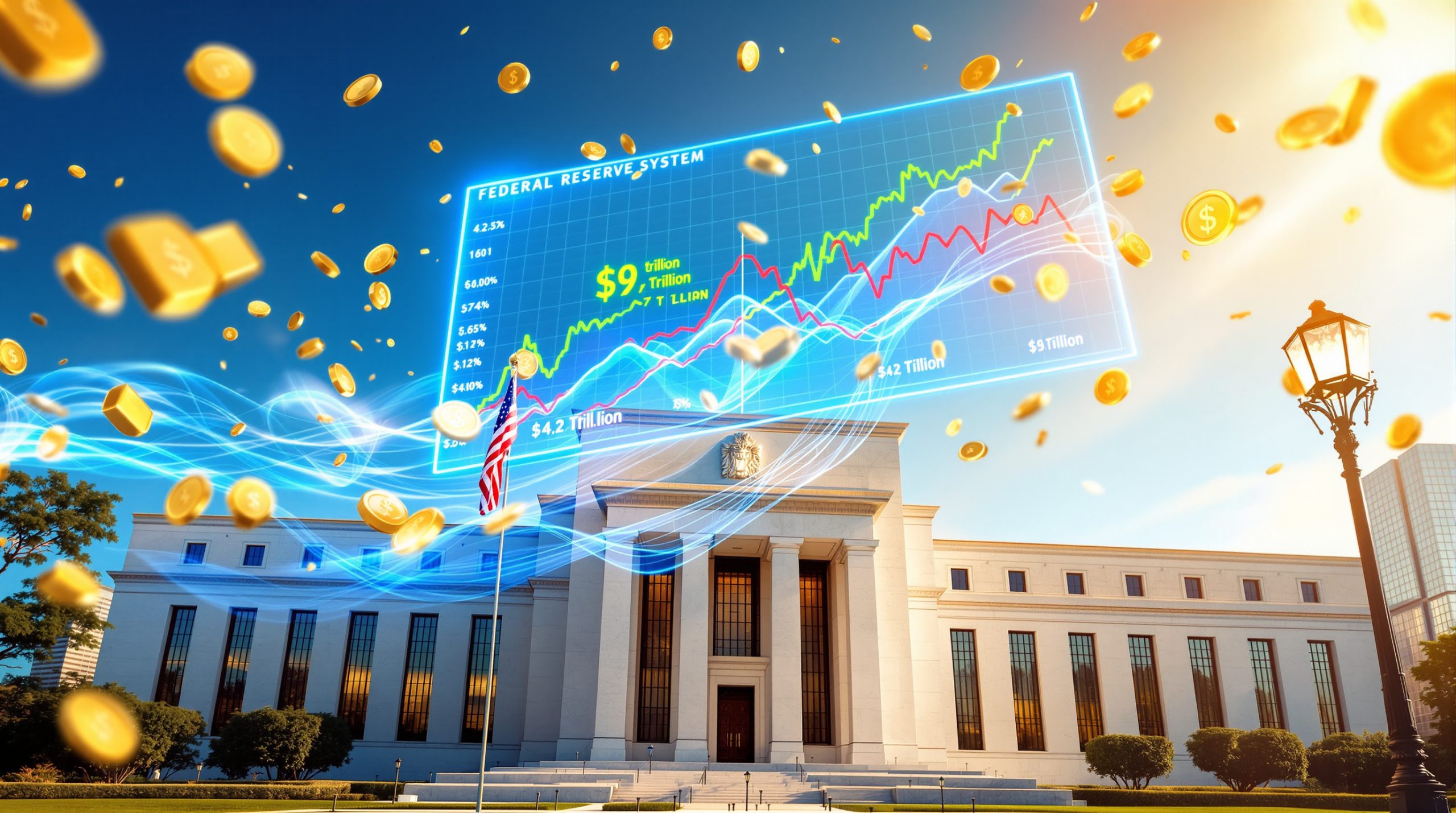What factors are driving HSBC's gold price forecast revision?
HSBC has significantly raised its gold price forecasts for 2025 and 2026, reflecting a bullish outlook driven by multiple economic and geopolitical factors. According to Mining Weekly (July 1, 2025), the bank cites "elevated risks and government debt" as primary catalysts behind their revised projections.
Gold has historically performed well during periods of economic uncertainty, serving as a hedge against inflation and currency devaluation. The precious metal's appeal strengthens when traditional investment vehicles face volatility or diminished returns.
Economic uncertainty and government debt concerns
Rising government debt levels worldwide have emerged as a significant driver behind gold's price appreciation. In the United States specifically, Senate Republicans have been advancing President Donald Trump's tax cut and spending package, which analysts project could add approximately $3.3 trillion to the national debt.
"The growing debt burden across major economies creates a fundamental support structure for gold prices, as investors seek protection against potential currency debasement and long-term inflation risks." – HSBC analysis via Mining Weekly (July 1, 2025)
This mounting debt concern has accelerated capital flows into gold as a traditional safe-haven asset, pushing prices to unprecedented levels.
Geopolitical tensions creating market volatility
Ongoing international conflicts and trade tensions have significantly contributed to market uncertainty, enhancing gold's appeal. Treasury Secretary Scott Bessent's warning about potential "sharply higher tariffs" ahead of a July 9 deadline has further fueled market anxiety.
These geopolitical factors create a premium in gold prices as institutional and retail investors seek portfolio protection against unexpected market shocks and currency fluctuations.
Central bank purchasing patterns
Central bank buying behavior represents a crucial factor in gold's recent price performance. According to HSBC's analysis, central bank purchases are likely to moderate when prices exceed $3,300 per ounce but could increase if prices correct toward $3,000.
This dynamic creates an effective price floor, with major monetary authorities stepping in during significant price dips to diversify their reserves away from traditional fiat currencies, particularly the US dollar.
What are HSBC's new gold price projections?
HSBC has made substantial upward revisions to its gold price forecasts, reflecting increasingly bullish sentiment for the precious metal through 2026.
2025 forecast adjustment
For 2025, HSBC has raised its average gold price forecast to $3,215 per ounce, representing a significant $200 increase from its previous projection of $3,015. The bank anticipates gold will finish 2025 at approximately $3,175 per ounce, according to Mining Weekly's July 1, 2025 report.
2026 forecast revision
Looking further ahead to 2026, HSBC has increased its average gold price forecast to $3,125 per ounce from $2,915 previously. The bank expects gold to end 2026 at approximately $3,025 per ounce.
The following table summarizes HSBC's revised forecasts:
| Forecast Period | Previous Avg. ($/oz) | Revised Avg. ($/oz) | Year-End Target ($/oz) |
|---|---|---|---|
| 2025 | 3,015 | 3,215 | 3,175 |
| 2026 | 2,915 | 3,125 | 3,025 |
Trading range expectations
HSBC anticipates significant price volatility throughout the remainder of 2025, projecting a trading range between $3,100 and $3,600 per ounce. This $500 range highlights the potential for substantial price fluctuations as various market forces influence gold's trajectory.
The wide trading band reflects uncertainty about:
- The pace and magnitude of central bank policy shifts
- Evolving geopolitical tensions
- Fiscal policy developments, particularly in the United States
- Physical demand elasticity at sustained higher prices
How does the current price compare to historical records?
Gold has achieved remarkable price milestones in 2025, consistently setting new all‐time highs analysis and transforming investor perspectives on its long-term value proposition.
Recent record-breaking performance
According to Mining Weekly's July 1, 2025 report, spot gold reached an unprecedented high of $3,500.05 per ounce in late April 2025. This record represented a significant psychological breakthrough for the precious metal, demonstrating strong institutional and retail investor confidence.
As of July 1, 2025 (11:46 GMT), spot gold was trading at $3,348.50 per ounce, maintaining elevated levels despite some consolidation from the April peak.
Sustained performance above $3,000
HSBC emphasizes that even with price moderation from the absolute highs, gold's sustained trading above the psychologically important $3,000 level has reinforced its dual status as both a safe-haven asset and an effective portfolio diversifier.
This extended period above $3,000 marks a fundamental shift in gold's trading range, as previous multi-year resistance zones have transformed into support levels.
Price stability factors
Several factors contribute to price stability at these elevated levels:
- Central bank purchasing behavior creating effective price floors
- Institutional investment demand driven by portfolio diversification needs
- Persistent macroeconomic uncertainties supporting safe-haven demand
- Limited new mine supply coming online despite higher prices
"The sustained trading above $3,000 per ounce represents a new paradigm for gold valuations, supported by fundamental shifts in global monetary policy and institutional asset allocation." – HSBC analysis via Mining Weekly (July 1, 2025)
What impact might US fiscal policy have on gold prices?
US fiscal decisions have emerged as critical factors influencing gold prices, with recent developments highlighting potential inflationary pressures that traditionally benefit precious metals.
Tax cut implications
Mining Weekly (July 1, 2025) reports that Senate Republicans have been working to pass President Donald Trump's sweeping tax cut and spending bill, which economic analysts project could add approximately $3.3 trillion to the national debt.
This potential fiscal expansion creates several gold-supportive conditions:
- Increased government borrowing requirements
- Higher inflation expectations
- Potential currency debasement concerns
- Long-term fiscal sustainability questions
These factors collectively enhance gold's appeal as a store of value independent of government monetary policies.
Tariff considerations
Treasury Secretary Scott Bessent has indicated that countries could face notifications of sharply higher tariffs as a July 9 deadline approaches. These potential trade restrictions could:
- Disrupt global supply chains
- Increase consumer prices
- Create market uncertainty
- Heighten currency volatility
Each of these outcomes tends to support gold prices as investors seek protection against economic disruption and currency fluctuations.
Debt concerns as price catalyst
The growing debt burden across major economies, particularly in the United States, continues to provide underlying support for gold prices. Historically, periods of rapid debt expansion have correlated with strong gold performance as investors question the long-term sustainability of fiscal positions.
"The combination of tax cuts and potential tariff increases creates a potent environment for gold price appreciation, as both policies can contribute to inflationary pressures while simultaneously increasing economic uncertainty." – Mining Weekly analysis (July 1, 2025)
How might physical gold demand respond to higher prices?
While investment demand has driven gold to record‐highs inflation hedge, HSBC cautions that sustained high prices could impact traditional physical demand segments, potentially creating price-limiting feedback mechanisms.
Jewelry market sensitivity
According to HSBC's analysis reported in Mining Weekly (July 1, 2025), further price increases above $3,500 per ounce could lead to reduced demand in the jewelry sector, particularly in price-sensitive markets such as India and China.
Jewelry typically represents the largest component of physical gold demand, and its elasticity at higher price points creates natural resistance levels in the market. Cultural and seasonal factors in key Asian markets influence purchase decisions, with wedding seasons and religious festivals often determining buying patterns regardless of absolute price levels.
Retail investment impact
The coin and small bar markets, which represent important segments of physical gold demand, may also experience reduced purchasing activity if prices remain elevated for extended periods.
However, these retail investment segments often show different price sensitivity than jewelry markets:
- Greater tolerance for higher prices during periods of economic uncertainty
- Purchasing motivated by wealth preservation rather than consumption
- Willingness to dollar-cost average into positions during price volatility
Regional demand variations
HSBC notes that different regions exhibit varying degrees of price sensitivity, with traditional gold-consuming markets in Asia potentially showing more elasticity of demand than Western investment markets.
This regional divergence creates a complex global demand picture:
- Western institutional investors focusing on macroeconomic factors
- Asian retail consumers balancing cultural significance with affordability
- Middle Eastern buyers considering both wealth preservation and aesthetic value
- Central banks evaluating reserve diversification needs regardless of price points
What role will central banks play in the gold market?
Central banks have emerged as crucial players in the gold market, with their purchasing decisions significantly influencing price dynamics and creating effective support levels.
Purchasing pattern adjustments
According to Mining Weekly (July 1, 2025), HSBC anticipates that central bank gold purchases will likely moderate if prices climb further above $3,300 per ounce, as the cost-benefit analysis for reserve diversification shifts.
This price sensitivity creates a natural moderation mechanism in the market, with central banks becoming more selective buyers at higher price points.
Strategic buying opportunities
Conversely, HSBC suggests that central banks may increase their gold purchases if prices correct toward the $3,000 level, potentially providing a price floor and limiting downside risk.
This counter-cyclical buying behavior represents a significant change from historical patterns, where central banks were often seen as price-insensitive market participants.
Reserve diversification trends
The ongoing trend of central banks diversifying away from traditional reserve currencies, particularly the US dollar, continues to provide structural support for gold demand.
Key factors driving this diversification include:
- Concerns about US debt sustainability
- Geopolitical tensions affecting currency relationships
- Desire for assets without counterparty risk
- Protection against potential currency devaluations
"Central bank buying behavior at specific price thresholds has created a new market dynamic that supports gold's overall price structure while limiting extreme volatility." – HSBC analysis via Mining Weekly (July 1, 2025)
How should investors approach gold in their portfolios?
Given HSBC's revised outlook, investors may need to reconsider gold's role in their investment strategies insights, particularly as the precious metal maintains unprecedented price levels.
Portfolio diversification benefits
HSBC emphasizes that gold's performance above $3,000 per ounce has reinforced its effectiveness as a portfolio diversifier, particularly during periods of market volatility and economic uncertainty.
This diversification benefit stems from gold's historically low correlation with traditional asset classes like stocks and bonds, especially during market stress periods when correlations between most financial assets tend to increase.
Risk management considerations
For investors concerned about inflation, currency devaluation, or geopolitical risks, gold continues to offer potential protection against these threats to portfolio value.
Effective risk management approaches might include:
- Establishing a core gold position as portfolio insurance
- Increasing allocations during periods of heightened economic uncertainty
- Considering both physical gold and gold-related securities for different objectives
- Rebalancing gold positions after significant price movements
Entry point strategies
Given the wide trading range expected by HSBC ($3,100-$3,600), investors might consider staggered entry points rather than committing capital at a single price level.
This approach acknowledges gold's price volatility while establishing positions at an average cost basis that aligns with long-term strategic allocation goals.
"The sustained trading above $3,000 per ounce validates gold's role as both a safe-haven asset and an effective portfolio diversifier." – HSBC via Mining Weekly (July 1, 2025)
FAQ: Gold Price Outlook and Market Dynamics
Will gold prices continue to rise through 2025 and 2026?
According to HSBC's analysis, while gold prices are expected to remain elevated, they may not continue rising indefinitely. The bank forecasts average prices of $3,215 for 2025 and $3,125 for 2026, suggesting some moderation from current levels but still maintaining historically high valuations.
Several factors could limit further price appreciation:
- Reduced jewelry demand at sustained high prices
- Potential for central bank purchasing to moderate above $3,300/oz
- Price elasticity in key physical markets like India and China
- Profit-taking after significant price gains
What factors could cause gold prices to fall below $3,000?
Several factors could potentially drive gold prices below $3,000, including:
- Significant interest rate increases by major central banks
- Resolution of major geopolitical conflicts
- Substantial strengthening of the US dollar
- Sharp reduction in inflation expectations
- Liquidation of institutional gold positions to cover losses in other markets
However, HSBC notes that central bank buying around the $3,000 level could provide significant support, potentially limiting prolonged moves below this threshold.
How do gold mining companies benefit from these price levels?
Gold mining companies typically benefit substantially from elevated gold prices, as their production costs remain relatively stable while revenue increases. This expanded profit margin can lead to:
- Higher dividend distributions to shareholders
- Increased exploration budgets to discover new reserves
- Capital investment in production capacity expansion
- Potential merger and acquisition activity within the sector
- Ability to develop lower-grade ore bodies economically
The sector's operating leverage means that price increases above all-in sustaining costs (AISC) flow directly to profit margins, significantly enhancing valuations.
Does physical gold or gold ETFs provide better investment exposure?
Both physical gold and gold ETFs offer distinct advantages. Physical gold provides direct ownership without counterparty risk but involves storage and insurance costs. Gold ETFs offer convenience, liquidity, and lower transaction costs but introduce counterparty risk.
The optimal choice depends on individual investment objectives, time horizon, and risk tolerance:
Physical Gold Advantages:
- Direct ownership without intermediaries
- No counterparty risk
- Potential privacy benefits
- Portable wealth during extreme scenarios
Gold ETF Advantages:
- High liquidity for trading
- Lower transaction costs
- No storage or insurance requirements
- Easily incorporated into existing brokerage accounts
Many sophisticated investors utilize both approaches, maintaining physical gold for long-term core holdings while using ETFs for tactical allocations and market performance amid surge.
Disclaimer: The forecasts and market analysis presented in this article are based on information from Mining Weekly (July 1, 2025) reporting on HSBC's gold price projections. Market conditions can change rapidly, and actual outcomes may differ significantly from these forecasts. Investors should conduct their own research and consider their unique financial circumstances before making investment decisions based on 2025 gold forecast insights.
Looking for the Next Major Gold Discovery Opportunity?
Discovery Alert's proprietary Discovery IQ model delivers instant notifications on significant ASX mineral discoveries, helping investors identify potential opportunities like those in the gold sector before the broader market. Visit the Discovery Alert discoveries page to understand how major mineral discoveries can lead to substantial returns and begin your 30-day free trial today.




